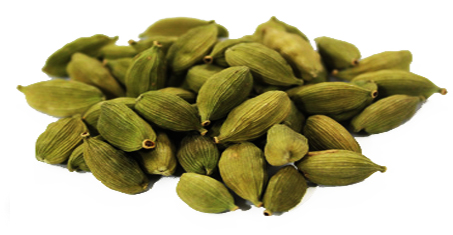What Is Cardamom?
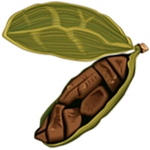
Cardamom is one of the world’s very ancient spices. It is native to the East originating in the forests of the western ghats in southern India, where it grows wild. Today it also grows in Sri Lanka, Guatemala, Indo China and Tanzania. The ancient Egyptians chewed cardamom seeds as a tooth cleaner; the Greeks and Romans used it as a perfume. Vikings came upon cardamom about one thousand years ago, in Constantinople, and introduced it into Scandinavia, where it remains popular to this day.
Small Green Cardamom Plant and Cultivation
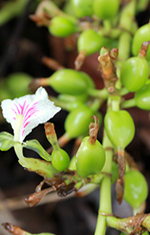
A perennial bush of the ginger family, with sheathed stems reaching 2-5m (6-16 feet) in height. It has a large tuberous rhizome and long, dark green leaves 30-60 cm (1-2 ft) long, 5-15 cm (2-6”) wide. It grows in the tropics, wild and in plantations. Trailing leafy stalks grow from the plant base at ground level. These bear the seed pods. The flowers are green with a white purple-veined tip. Cardamoms are traditionally grown in partially cleared tropical rain forests, leaving some shade. Similarly, in plantation cultivation, forest undergrowth is cleared and trees thinned to give just enough shade and the rhizome or seeds planted at 3m (10 ft) intervals. The plants are gathered in October-December, before they ripen, to avoid the capsules splitting during drying. They are dried in the sun or bleached with sulphur fumes.
Small Green Cardamom Description
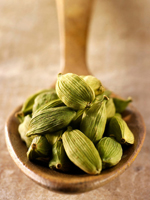
Cardamom refers to several plants of the similar genera Elettaria and Amomum in the ginger family Zingiberaceae. Both genera are native to India, Pakistan, Nepal, and Bhutan; they are recognised by their small seed pods, triangular in cross-section and spindle-shaped, with a thin, papery outer shell and small black seeds. Guatemala, where the German coffee planter Oscar Majus Kloeffer introduced Indian cardamom before World War I, has become the biggest producer and exporter of cardamom in the world, followed by India. Some other countries, such as Sri Lanka, have also begun to cultivate it. Elettaria pods are light green.
Uses of Small Green Cardamom
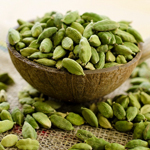
Both forms of cardamom are used as flavorings and cooking spices in both Food and Drink, and as a Medicine. Green Cardamom is used as a Spice, a Masticatory, and in Medicine; it is also Smoked, sometimes.
Green cardamom is broadly used in South Asia to treat infections in teeth and gums, to prevent and treat throat troubles, congestion of the lungs and pulmonary tuberculosis, inflammation of eyelids, and digestive disorders.
15 Health Benefits of Small Green Cardamom
1-Digestion – Cardamom is related to ginger and can be used in much the same way to counteract digestive problems. Use it to combat nausea, acidity, bloating, gas, heartburn, loss of appetite, constipation, and much more.
2-Detoxify – This spice helps the body eliminate waste through the kidneys.
3-Halitosis – Chew Cardamom after meals or whenever they need to freshen their breath.
4-Diuretic – Part of the reason cardamom is such a good detoxifier is thanks to the diuretic properties. It helps clean out the urinary tract, bladder, and kidneys, removing waste, salt, excess water, toxins, and combating infections too.
5-Depression – The science behind the antidepressant qualities of cardamom hasn’t been studied yet, but Ayurvedic medicine swears by the tea as a means to fight depression.
6-Oral Health – Apart from helping with bad breath, cardamom is used for mouth ulcers and infections of the mouth and throat.
7-Cold and Flu – This pungent spice may help prevent and relieve cold and flu symptoms. It’s also used for bronchitis and coughs.
8-Cancer – Animal studies are showing promise that cardamom protects against, inhibits growth, and even kills some cancers.
9-Blood Pressure – As a diuretic and fiber rich spice, cardamom significantly lowers blood pressure.
10-Blood Clots – Cardamom prevents dangerous blood clots by preventing platelet aggregation and the sticking to the artery walls.
11-Antioxidant – Many of the vitamins, phytonutrients, and essential oils in cardamom act as antioxidants, cleaning up free radicals and resisting cellular aging.
12-Pathogens – The volatile essential oils in cardamom inhibit the growth of viruses, bacteria, fungus, and mold.
13-Anti-inflammatory – Like ginger and turmeric, its relatives, cardamom has some anti-inflammatory properties that limit pain and swelling, especially in mucus membranes, the mouth, and throat.
14-Hiccups – Cardamom is an anti-spasmodic that can help get rid of hiccups. This also applies to other involuntary muscle spasms, like stomach and intestinal cramps.
15-Aphrodisiac – Traditional medicine lists cardamom as a powerful aphrodisiac that can help with erectile dysfunction and impotence.
Producing Countries of Small Green Cardamom
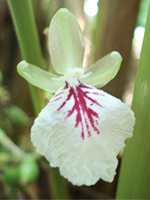
Guatemala is the First Largest Producer of Cardamom in the World, with an average annual yield between 30,000 to 35,000 Metric Tons. Cardamom was first introduced to Guatemala in 1914.
India is the Second Largest Producer of Cardamom in the World, generating around 15,000 Metric Tons Annually.
The Estimates of Guatemala Cardamom Harvest of 2014 - 2015 will reach to about 30,000 Tons , 15% less than 2013-2014, when it was 35,000 Tons.
Consuming Countries of Small Green Cardamom

Consumption of cardamom has sharply increased throughout the world during the last two decades. The major consuming countries of cardamom are the Middle Eastern countries, India, Pakistan, European countries, the US, and Japan. Middle Eastern countries such as Saudi Arabia and the United Arab Emirates, and South-East Asian countries such as India, etc., account for more than 60% of the world's consumption.
Saudi Arabia is the single largest importer of Cardamom in the world, followed by Kuwait. The list of countries / territories that are the major importers is as follows:
1. Saudi Arabia | 2. Kuwait | 3. UAE | 4. USA | 5. Japan | 6. Pakistan | 7. U.K | 8. Malaysia | 9. Israel | 10. Australia |
11. Canada | 12. South Africa
Recipe for Beverages with Small Green Cardamom
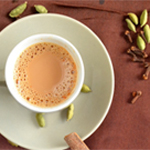
Cardamom Tea
IngredientsA: 3 Green Cardamom Pods
B: 2 Brown Cardamom Pods
C: 2 Teabags
D: 4 Tbsp Sugar
E: Milk to Taste
A: Put about seven cups of fresh cold water in a large saucepan.
B: Lightly smash the cardamoms in a pestle and mortar. Add to the water.
C: Bring to the boil.
D: When boiling, add the teabags and sugar.
E: Add enough milk to turn it a pale beige colour.
F:Bring to the boil again and just as it is rising to the top of the pan, switch off the heat.
G: Pour through a strainer.
Recipe for Cooking With Small Green Cardamom
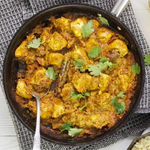
Cardamom Butter Chicken
IngredientsA: 2 Garlic Cloves, Roughly Chopped, Thumb-Sized Piece Ginger, Chopped
B: 2 Green Chillies, Chopped (leave seeds in if you like it hot)
C: 3 Tbsp Ghee, or Vegetable Oil, 2 Onions, Sliced
D: 2 Tbsp Each Turmeric, Garam Masala and Ground Cumin
E: 4 Chicken Breasts, Cut Into 2½ cm Cubes, 4 Cloves, 12 Cardamom Pods
A: Place the garlic, ginger, chillies and coriander stalks in the small bowl of a food processor with a good pinch of salt, and blend to a fine paste – or grind to a paste using a pestle and mortar.
B: Heat 2 tbsp of the ghee or oil in a large pan, add the onions and cook slowly for 15-20 mins until golden and caramelised. Tip in the garlic-ginger paste, turn up the heat and cook for a further 5 mins. Add the ground spices and cook for 2 mins more until fragrant. Scoop the spicy onion mixture out of the pan into a bowl.
C: Add the remaining ghee or oil to the pan and cook the chicken over a medium-high heat until browned all over. Tip into a bowl, cover and set aside.
D: Return the onion mixture to the pan along with the whole spices, tomatoes and a can full of water (400ml). Bring to the boil, then cover and simmer gently for 40 mins.
E: Return the chicken to the pan and cook, uncovered, for a further 10 mins until the sauce has thickened and the chicken is cooked through. Stir in the yogurt and cream, season well and scatter with coriander leaves. Serve with chapatis and rice.
Recipe for Dessert With Small Green Cardamom
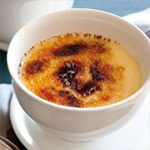
Cardamom Cream Brulees
IngredientsA: 2 Cups Heavy Cream
B: 1 Vanilla Bean, Split Lengthwise
C: 2 Pods Green Cardamom, Cracked Open
D: 6 Egg Yolks
E: 10 Tbs. Superfine (caster) Sugar
A: Preheat an oven to 325°F. Select a baking dish 2 to 2 1/2 inches deep and large enough to hold four 3/4-cup ramekins or other ovenproof dishes. Line the baking dish with a thin kitchen towel.
B: In a saucepan over medium heat, combine the cream, vanilla bean, and cardamom pods and their seeds. Bring to a simmer and cook for 1 minute. Remove the vanilla bean and, using the tip of a knife, scrape the seeds into the cream. Continue to simmer the cream, stirring often, for 3 to 4 minutes more. Remove from the heat and let cool slightly.
C: In a bowl, whisk together the egg yolks, 6 Tbs. of the sugar and the salt until thickened, about 2 minutes. Slowly add the warm (not hot) cream mixture, whisking constantly. Pour the custard through a fine-mesh sieve into a 2-cup measuring pitcher. Skim any bubbles off the surface. Divide the custard evenly among the prepared ramekins. Place the ramekins in the towel-lined dish and pour hot water into the dish to reach halfway up the sides of the ramekins. Cover the dish loosely with aluminum foil.
D: Bake the custards until they are set but jiggle slightly in the center when shaken, 20 to 25 minutes. Transfer the baking dish to a wire rack and let the custards cool slightly, then lift the ramekins out of the water bath and set on the rack to cool for 1 hour. Cover tightly and refrigerate for at least 3 hours or up to overnight.
E: Just before serving, preheat a broiler. Sprinkle each custard evenly with 1 Tbs. of the remaining sugar. Place the custards on a rimmed baking sheet and slide under the broiler about 4 inches from the heat source. Broil just until the sugar caramelizes, 1 to 2 minutes. Alternatively, use a kitchen torch to caramelize the sugar. Serve immediately.

